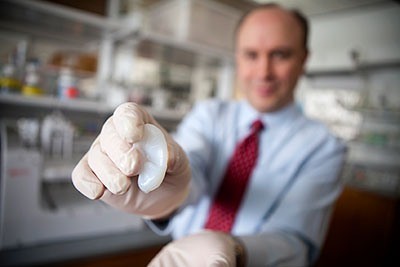Researchers have fabricated a bioartificial ear that looks and mechanically behaves like a human one, as revealed in Journal of the Royal Society Interface yesterday.
Lead author, Dr Thomas Cervantes explains, ‘This is the first demonstration of a full-size human ear that maintains shape and flexibility after 3 months.’
The new model, which incorporates an embedded titanium wire to maintain shape, has previously been demonstrated on a smaller scale, implanted on the back of a mouse, but this study demonstrates minimal distortion of a full-size adult ear, when embedded on a rat.
The team at Massachusetts General Hospital combined collagen from cows with ear cartilage cells from sheep, which they moulded into ear structures using 3D printed scaffolds. After 3 months implanted on the backs of male nude rats, ears which contained a thin wire framework showed much less distortion of the initial ear shape, compared with ears without wire support.
Cervantes adds, ‘Shape and flexibility are key; tissue engineered constructs tend to distort in shape during growth, which is obviously a problem for the ear, because we are aiming to recreate a very specific shape.’
All implants were well tolerated and no exposure or extrusions occurred during 12 weeks in vivo. However, when extracted, the implants containing wire resembled a human ear, whereas implants without wire were flattened and distorted. The implants containing the titanium framework also exhibited similar flexibility to a human ear.
Story Source:
The above story is based on materials provided by The Royal Society.





